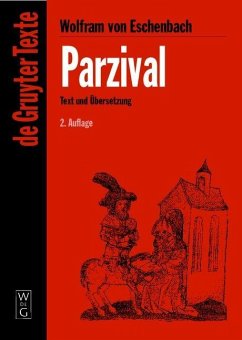

Wolfram's work indicates a number of possible patrons (most reliably Hermann I of Thuringia), which suggests that he served at a number of courts during his life.

The arms shown in the Manesse manuscript come from the imagination of a 14th-century artist, drawing on the figure of the Red Knight in Parzival, and have no heraldic connection with Wolfram. However, the evidence is circumstantial and not without problems - there are at least four other places named Eschenbach in present-day Bavaria, and Wolframs-Eschenbach was not part of Bavaria in Wolfram's time. This and a number of geographical references have resulted in the present-day Wolframs-Eschenbach, previously Obereschenbach, near Ansbach in Bavaria, being officially designated as his birthplace. In Parzival he talks of wir Beier ("we Bavarians") and the dialect of his works is East Franconian. There are no historical documents which mention him, and his works are the sole source of evidence. As a Minnesinger, he also wrote lyric poetry. However, the evidence is circumstantial and not without problems - there are at least four other places named Eschenbach in present-day Bavaria, and Wolframs-Esche Wolfram von Eschenbach was a German knight and poet, regarded as one of the greatest epic poets of his time.

Wolfram von Eschenbach was a German knight and poet, regarded as one of the greatest epic poets of his time.


 0 kommentar(er)
0 kommentar(er)
